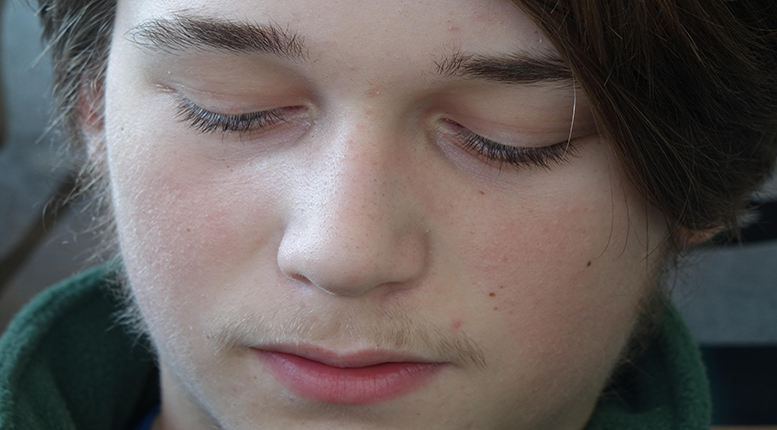BOSTON— A new report from The Fenway Institute and the Center for Prisoner Health and Human Rights identifies best practices in the management of lesbian, bisexual, gay, transgender, questioning, and intersex (LGBTQI) youth in juvenile justice settings. The report notes that LGBT youth are overrepresented in the juvenile justice system, especially lesbian and bisexual girls and youth of color. It also notes that LGBT youth are disproportionately vulnerable to sexual victimization while in custody. The report calls on juvenile justice professionals, lawmakers, and advocates to reduce and prevent youth involvement in the criminal justice system and to take steps to improve the safety and well-being of those who are incarcerated.
In 2016, 856,130 youth were arrested and 45,567 were held in 1,772 residential juvenile facilities across the country. Up to 20 percent of them identify as LGBT, even though LGBT youth comprise just seven to eight (7-8) percent of the general population. Over 10 percent of lesbian, gay, and bisexual youth in juvenile justice settings report sexual victimization by another youth, compared with just 1.5 percent of heterosexual youth reporting the same action. Over seven percent of all youth report sexual victimization by facility staff (7.5% of non-heterosexual youth and 7.8% of heterosexual youth).
“The overrepresentation of LGBTQI youth in the juvenile justice system, when combined with the elevated risk for sexual victimization, makes youth confinement facilities especially dangerous places for LGBTQI young people,” said Sean Cahill, Director of Health Policy Research at The Fenway Institute and a coauthor of the report. “But when juvenile justice professionals implement measures that improve the safety and well-being of LGBTQI youth in their care, it can result in a more respectful and therapeutic environment, and a safer and more secure facility, for all youth and staff.”
“All youth entering the juvenile justice system suffer from emotional and/or behavioral issues that are best dealt with in the community. While it must be our collective goal as a society to eliminate the need for these facilities, the fact remains that too many of our youth are held in them. The vast majority of LGBTQI youth confined in juvenile justice facilities bear the additional burden of rejection by family and stigmatization by society,” added co-author Brad Brockmann, an Assistant Professor of the Practice in Health Services, Policy and Practice at Brown University’s School of Public Health and former Executive Director of the Center for Prisoner Health and Human Rights. “This report is meant to highlight the challenges that LGBTQI youth face while in detention and provide guidance for administrators to ensure the safety and security of all youth who might be particularly vulnerable to harassment and abuse.”
Research consistently demonstrates that LGBTQI youth are often subject to harassment and rejection from their families, schools, and communities, which contributes to their disproportionate involvement in the juvenile justice system. Such youth also suffer disproportionate educational and legal punishments that are not explained by their greater engagement in illegal or transgressive behaviors.
Juvenile justice professionals may underestimate the number of LGBT youth in their care and control. Understanding the factors that bring LGBTQI youth into the system, including extensive trauma and higher rates of homelessness, is essential for the development and implementation of effective treatment plans for these youth. A more complete understanding of the specific needs and vulnerabilities of these youth also better equips staff to address potential security and safety issues before they arise, creating better run and more secure facilities generally.
Recommendations include:
- Develop and implement specific guidance, including explicit non-discrimination policies, for juvenile justice staff in how to work with LGBTQI youth.
- Train staff on how to provide nondiscriminatory and respectful care for LGBTQI youth in custody.
- Provide private spaces for intake, and train staff to identify vulnerable LGBTQI youth to reduce the chances of physical and sexual victimization.
- House transgender and intersex youth on a case-by-case basis, and when possible based on their gender identity.
- Allow transgender and intersex youth to shower separately from other youth if they wish.
- Conduct searches of transgender and intersex youth in a non-abusive manner. Where possible, allow gender minority youth to choose the gender of the officer conducting the search.
- Engage in respectful communication practices, avoiding slurs and using names and pronouns consistent with the gender identity of the juvenile.
- Uniformly apply clothing, grooming, and commissary rules to all genders.
- Offer mental health and other support services to all youth in their care to aid them in the process of maturation through adolescence. These services should always be offered and tailored to the unique needs of each individual, including LGBTQI youth.
- Ensure that reentry and reintegration programs address the unique experiences and needs of LGBTQI youth to ensure against recidivism.
“At their core, our recommendations come down to creating safe, respectful, and non-discriminatory environments in juvenile justice settings,” Cahill added. “This is the only way they can meet the rehabilitation and treatment needs of all youth in their care, which should be the focus of juvenile justice systems.”
Over 20 experts in juvenile justice, including juvenile justice professionals, advocates, policymakers, former residents of youth confinement facilities, and researchers convened together and contributed to this report. The report provides examples of best practice policies from juvenile and criminal justice systems in Colorado, Idaho, Illinois, Louisiana, Massachusetts, New York, Texas, and elsewhere. After review, Massachusetts’s Department of Youth Services was seen as having the “gold standard” for the development and implementation of best practices relating to LGBTQI youth in confinement, and some of the agency’s written policies are included in the report’s appendices.
The report, “Emerging Best Practices for the Management and Treatment of Lesbian, Gay, Bisexual, Transgender, Questioning, and Intersex Youth in Juvenile Justice Settings,” is available online at https://is.gd/4uzvgr.
It was authored by Bradley Brockmann JD, Sean Cahill Ph.D., Vickie Henry JD, and Timothy Wang MPH, and copublished by the Center for Prisoner Health and Human Rights at the Miriam Hospital in Providence, Rhode Island and The Fenway Institute in Boston.
About Fenway Health
Since 1971, Fenway Health has been working to make life healthier for the people in our neighborhoods, the LGBT community, people living with HIV/AIDS and the broader population. The Fenway Institute at Fenway Health is an interdisciplinary center for research, training, education and policy development focusing on national and international health issues. Fenway’s Sidney Borum Jr. Health Center cares for youth and young adults ages 12 to 29, including those who are LGBT or just figuring things out; homeless; struggling with substance use, or living with HIV/AIDS. AIDS Action, Fenway’s public health division, works to reduce the number of HIV infections while supporting those already infected and operates a needle exchange that serves as an entry point to healthcare services for active substance users.
About the Center for Prisoner Health and Human Rights
The Center for Prisoner Health and Human Rights, founded in 2005 and based at The Miriam Hospital in Providence, RI, is dedicated to improving the health and human rights of incarcerated and other justice-involved individuals through education, research and advocacy. Key to this goal is bringing a public health lens to the nation’s epidemic of incarceration. The Center’s work falls into four core areas: 1) raising awareness at the national and state level about the healthcare issues and challenges that justice-involved populations face; 2) conducting and supporting innovative clinical, behavioral, and social research involving justice-involved populations; 3) providing education and training opportunities for college, graduate, and medical students in this area, and encouraging student engagement and leadership in justice issues; and 4) collaborating with local and national justice system stakeholders to identify, develop, and support projects that respond to the intersection of incarceration, recidivism, and public health.
[From a News Release]







